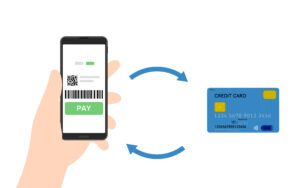
As a business owner, it’s frustrating to wait a long time for customers to pay you the money they owe. When services are performed, we hope and expect people to simply pay us. The Accounts Receivable Summary report in QuickBooks Online shows you which customers haven’t paid you yet and how long you’ve been waiting for their payments. Your balance sheet Accounts Receivable line also indicates the total money owed to you by all your customers if you lumped them all together.
Paying attention to these reports and numbers is super important. The accuracy of these numbers should also be maintained so you are aware of which customers need to be followed up on. If the report isn’t accurate, money is bound to be lost and one can’t confidently request payment.
Smart and prudent business owners work to shorten the time it takes to receive payment and reduce the amount of time your earnings are in the hands of your customers. If you don’t collect promptly, it affects your cash flow and your ability to operate as a business. For some businesses, this makes or breaks their business and they either go out of business or they can never grow and get ahead.
I recently pointed out to a prospective customer the extremely high accounts receivable balance and the extensive length of time to collect payments in his A/R Summary report. His response was laughter and defensiveness that I don’t know his industry and how it works. I could have gotten upset, but instead I felt sorry for him. It’s sad that he lets his customers set the rules. When he finishes the work and delivers without getting paid first, people don’t respect his effort or what he made. He is worth every penny. I was also discouraged by his business’s lack of processes, procedures, and terms. The entire future of the business could have seen massive results and rewards had he been open to change.
When we don’t watch and work on our accounts receivable cycle, we limit our business’s ability to grow, get out of debt, and expand into additional markets. This should be one of the highest priorities of your business.
If you don’t know where to start, here are 6 practical tips worth considering to get paid quicker and shorten the A/R cycle. For those of you reading who have worked on your business cycle, consider this a checklist. Have you done all of these? Which one do you still need to tackle and work on changing in your business?

- Create invoices or sales receipts promptly.
Whether you are performing a lawn service, selling software subscriptions, or building a house, carve out part of your day or create a commitment to change how to better invoice customers. This could be done on the road from a smartphone or tablet right inside QuickBooks or your industry’s app or obviously when you’re back in the office ending your day. For those larger businesses, one of your employees will be handling this task if not daily, then weekly. I once spoke to a small business and the wife of the business owner shared with me that he only invoices his customers twice a year. My mouth almost dropped open! No wonder they had no cash and they were going under. Don’t be shy about it. Customers expect to pay and expect a bill.
- Charge late fees
I know late fees can seem obtrusive and aggressive but think about the last time you received a late fee from something you didn’t pay for. You understood. You knew you should have paid on time. It’s a part of doing business. In QuickBooks Online software you can set up auto reminders. You can show grace to your customers by allowing a grace period before the late fee kicks in. You can charge a flat fee or a percentage of sales. They give you so many options which give your customers so many opportunities to respect your request.
- Write a payment policy
If you have no policy, agreement, or contract, don’t be surprised if you don’t get paid or don’t get paid on time. Nothing is holding the customer to respect you and your prices. You won’t be running the business; all power will have shifted to the customer and now they can do as they want and treat you as they wish. This step may require hiring some simple legal help or legal software to express terms professionally and effectively.
- Communicate Payment Expectations with Terms
Part of the business owner’s obligation is to communicate the terms to the customer. If we never share our terms and expectations, then we shouldn’t be surprised if the customer chooses their terms and conditions. Even if you have written terms, be sure to say them aloud as well so the customer can’t give excuses for not reading or seeing them or knowing them.
- Require the Customer agreement to your payment policy
While you’re communicating your payment policy and agreeing to the sold product/service, require a signature or some sort of acknowledgment from your customer. This will ensure they are aware of the commitment, and it will ensure you have customers that respect you and want to work with you. It prevents you from engaging with people who never intended to pay you to begin with. They are scared away before you waste your precious time, energy and resources.
- Make it easy for your customers to pay you.
Make it simple for customers to pay you. This is crucial but often forgotten and as you create this habit it will get easier to ask as you practice it. If paying you is too complicated, customers may give up. You don’t need to offer every payment method, but consider options like:
- Use CRM or invoice system with payment processing that can be used either on site or securely emailed.
- Financing for big projects (e.g., roofing or heating systems 3rd party to handle the financing)
- Credit cards
- Checks (ACH for more efficiency)
- Insurance (for healthcare providers)
- Direct bank transfers
You can also use apps like Venmo or PayPal, though these aren’t always ideal, especially for accounting. Remember, easier payment methods can lead to more satisfied customers and faster payments.

To determine your payment options, consider these questions: What is the easiest and most efficient payment for your accounts receivable cycle? Are the options you’re offering creating a lot of extra work for you and your staff? What is the least expensive way for you to process payments? If it costs you fees, will you pass those fees on to your customer? What payment options work with your accounts receivable software? QuickBooks Online software allows you to accept credit cards and ACH payments right inside the email you send your customer. It also allows you to save payment methods for your customers if you have recurring invoices or sales receipts for them.
All of these questions are smart to consider and revisit if you haven’t updated your payment options in some time.
